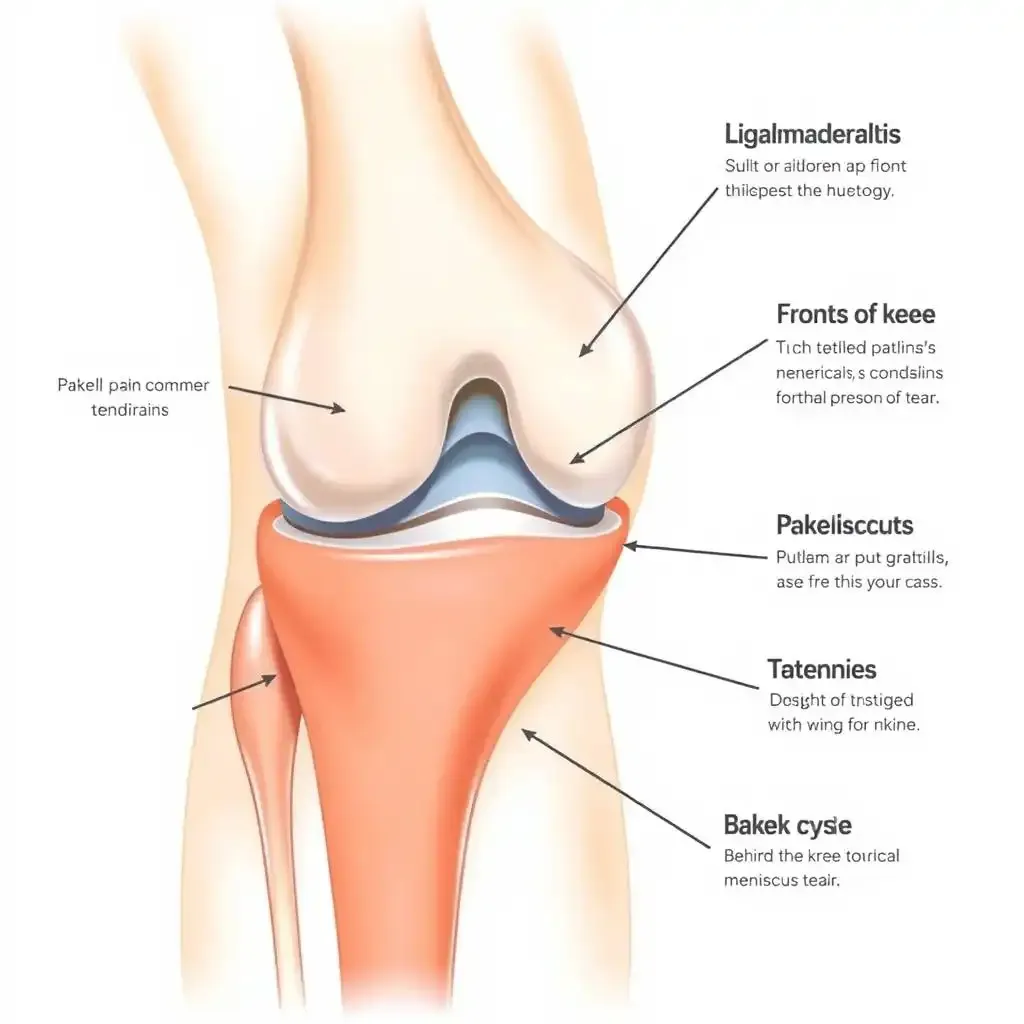Table of Contents
Knee pain – that nagging ache that can sideline you from your favorite activities. It's a common problem, affecting people of all ages and fitness levels. Luckily, many knee pain issues can be tackled with effective knee pain treatment at home. This article will guide you through understanding your knee pain, exploring various home remedies, and knowing when professional help is necessary. We'll cover everything from simple self-care techniques like RICE and gentle exercises to dietary considerations and when to seek medical attention. Get ready to take control of your knee health and get back to doing what you love!
Understanding and Diagnosing Your Knee Pain at Home
Understanding And Diagnosing Your Knee Pain At Home
Pinpointing the Problem: Where's the Ache?
Okay, so your knee hurts. That's not exactly helpful, is it? Think of your knee like a really cool, complicated machine. It's got lots of parts – bones, cartilage, ligaments, tendons – all working together. A pain in one spot might mean something different than a pain in another. Is it a sharp, stabbing pain? More like a dull ache? Does it hurt all the time, or just when you bend your knee? Knowing the specifics is like having a map to your knee's problem. Does it hurt on the inside, outside, front or back? Knowing exactly where the pain is helps us figure out what might be going on. If you're unsure, check out our post on knee pain for a more detailed explanation.
Pain Location | Possible Causes |
|---|---|
Front of knee | Patellar tendinitis, runner's knee |
Inside of knee | Meniscus tear, ligament sprain |
Behind knee | Baker's cyst, hamstring injury |
Considering the Clues: When Did It Start?
When did this knee drama begin? Did you twist it awkwardly playing soccer? Or did the pain creep up slowly, like a sneaky ninja? The timing of your knee pain is a big clue. A sudden, sharp pain after an injury suggests something might be torn or sprained. A gradual onset of pain could point to things like arthritis or overuse. Remember what you were doing when the pain started. That’s super important! If you're struggling to figure out the cause, take a look at our other articles on knee discomfort and knees are in pain for more information.
- Sudden onset: Injury, trauma
- Gradual onset: Overuse, arthritis
- Specific activities that trigger pain: Identify potential causes
Self-Assessment: Is It Serious?
Now, let's be honest, I'm not a doctor. But there are some warning signs that mean you need to see a real-life medical professional ASAP. If your knee is swollen, red, or incredibly painful, don't mess around. If you can't put weight on your knee, or if it’s locking or giving way, get to a doctor. These could be signs of something more serious, like a fracture or a severe ligament injury. You can find more information on finding relief in our article on knee pain relief. Also remember, even if it doesn't seem super urgent, it's always better to be safe than sorry. Remember, your knee is important – treat it kindly! For more serious situations, see our articles painful knee pain and painful knees.
Effective Knee Pain Treatment at Home: Natural Remedies and SelfCare
Effective Knee Pain Treatment At Home Natural Remedies And Selfcare
Okay, so your knee's acting up. It's like that one wobbly chair leg – annoying and potentially painful! But before you panic, let's explore some home-based solutions. Think of your knee as a delicate ecosystem; we need to nurture it back to health. The RICE method is your first-aid kit: Rest, Ice, Compression, Elevation. Rest means giving your knee a break from strenuous activities. Ice helps reduce swelling – think of it as a tiny, frosty superhero fighting inflammation. Compression, like a supportive hug from a bandage, helps stabilize things. And elevation – keeping your leg up – prevents extra fluid from pooling in your knee. It's like giving your knee a VIP lounge pass to recovery. For more detailed info on dealing with knee pain, check out our guide on .
Remedy | How it helps | Example |
|---|---|---|
Rest | Reduces strain | Avoid running or jumping |
Ice | Reduces swelling | Apply ice pack 20 minutes at a time |
Compression | Provides support | Use a knee brace or elastic bandage |
Elevation | Reduces swelling | Keep your leg elevated above your heart |
Next up: gentle movement. Think of it like coaxing a sleepy kitten out of its basket – slow and steady wins the race. Avoid anything that makes your knee scream in protest. Short walks, gentle stretches – these are your new best friends. Overdoing it is a recipe for disaster; listen to your body’s whispers, not its shouts. If you’re uncertain about what exercises are safe, there’s more information on .
- Walking (short distances)
- Gentle range-of-motion exercises
- Swimming (low-impact)
Weight management is another key player. Extra pounds put extra stress on your knees, it's like overloading a suitcase – eventually, something's gonna break. If you need to shed some weight, focus on a healthy diet and regular exercise. But remember, losing weight too quickly can also be stressful on your body. Talk to your doctor or a nutritionist to create a safe and effective plan. Also, for more tips on managing your knee pain, check out our post on .
Heat and cold therapy can be like switching between a comforting hot bath and a refreshing ice-cream – it all depends on what your knee prefers! Heat can soothe stiff muscles, while cold can tackle inflammation. Experiment to see what works best for you. And don’t forget about a healthy diet! Nourishing your body with fruits, vegetables, and whole grains is like giving your knees a super-powered vitamin boost. It’s all interconnected, you know! For further advice on navigating knee pain, see our article on .
Remember, consistency is key! These aren't magic fixes, but small steps in the right direction. Be patient, be kind to your knees, and celebrate every tiny victory along the way.
When to Seek Professional Help for Knee Pain Treatment
Okay, so you've tried the home remedies, and your knee's still acting like a grumpy gremlin. That's when it's time to call in the big guns – a doctor! I'm all about self-care, but some knee problems need professional attention. Think of it like this: you wouldn't try to fix your car's engine with a hammer and duct tape, right? Same goes for your knee. If your pain is severe, if it doesn't improve after a week or two of home treatment, or if you notice any weird stuff happening (like your knee locking up or swelling up like a balloon), it's time to see a doctor. They've got the special tools and expertise to figure out what's wrong and get you back on your feet.
- Severe, persistent pain
- Knee locking or giving way
- Significant swelling or redness
- Inability to bear weight
Don't feel silly about seeking professional help. It's better to be safe than sorry, especially when it comes to your joints! Ignoring a serious knee problem could lead to longer recovery times and even permanent damage. Remember that article on ? That's a good resource for some home remedies, but this section is all about when it's time to get professional help. Taking care of your knees is serious business!
Symptom | Severity | Action |
|---|---|---|
Pain | Mild, manageable | Try home remedies first |
Pain | Severe, persistent | Seek medical attention |
Swelling | Mild | RICE method, elevation |
Swelling | Significant | See a doctor immediately |
I know it can be tempting to tough it out, but trust me, ignoring a serious knee issue is like ignoring a flat tire – you're just prolonging the problem and making it worse. A doctor can diagnose the problem accurately, rule out serious conditions, and recommend the right treatment plan. They might suggest physical therapy, medication, or even surgery depending on the severity of the issue. Sometimes, a little professional guidance can make a world of difference. Check out our other articles on for a broader perspective on knee pain issues.
Think of your body as a finely tuned machine. When a part malfunctions, it needs expert attention. Ignoring minor knee pain might seem harmless, but it can easily escalate into something much more serious. Addressing the problem early on not only speeds up recovery but also prevents future complications. For more information on understanding different types of knee pain, you can check out our article on . Your knees are important, look after them!
- Don't delay seeking medical attention if you have concerns.
- Early intervention can prevent long-term problems.
- A doctor can provide accurate diagnosis and treatment.
Taking Charge of Your Knee Health
Managing knee pain effectively often involves a combination of self-care and professional guidance. Remember, while home remedies can provide significant relief, persistent or severe knee pain requires a doctor's evaluation. By understanding your pain, employing appropriate home treatments, and seeking professional help when needed, you can actively participate in your recovery and enjoy a more active, pain-free life. Prioritize your knee health – it’s the foundation for an active and fulfilling life.